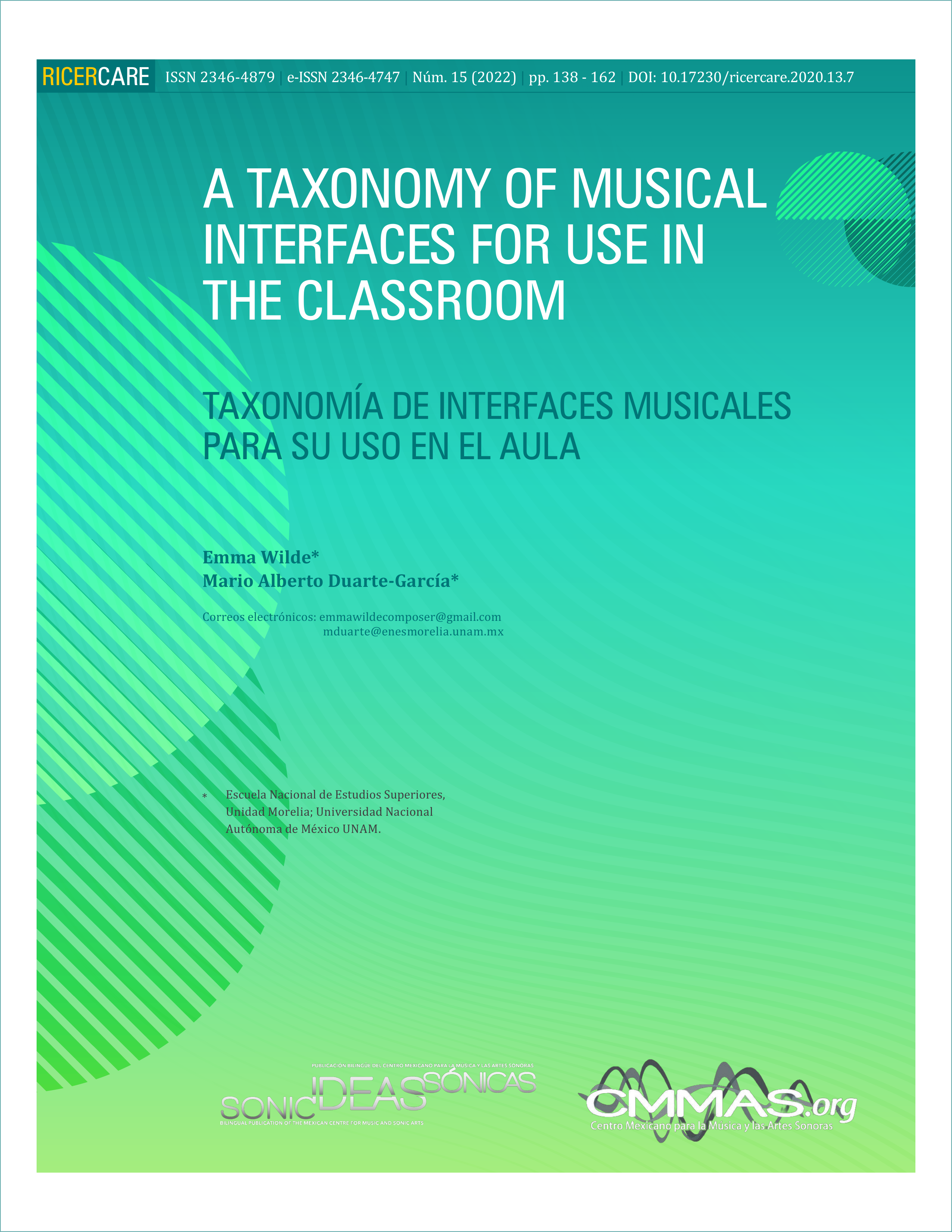A Taxonomy of Musical Interfaces for Use in the Classroom
Main Article Content
Keywords
digital musical instruments taxonomy, music technology pedagogy, musical interfaces, music education, music technology in the classroom
Abstract
Instrument taxonomies have been a preoccupation throughout history. Musical interfaces which involve the use of a sound engine (which could be a software) to sonify and translate data from a user to produce a sound result, do not fit into traditional instrument taxonomies. Magnusson argues that it is necessary to determine classification principles of musical interfaces because there are clear benefits of such a taxonomy for inventors, performers, musicologists, and composers. We propose that educators are another group of people who can benefit from a taxonomy of musical interfaces which considers classifications relating to educational use. Several researchers have argued that there is a need to evaluate how and why technology is implemented in the music classroom. Previous taxonomies of musical interfaces have focused on design principals and user interaction and have only partially explored educational objectives. In this paper we propose a taxonomy of musical interfaces which builds on previous taxonomies but extends them into the educational field. Throughout four case studies of recent musical interfaces implemented in educational contexts in four continents, we show how this taxonomy can be employed to classify how and why a musical interface is implemented in the classroom to analyze the educational benefits they can promote.

